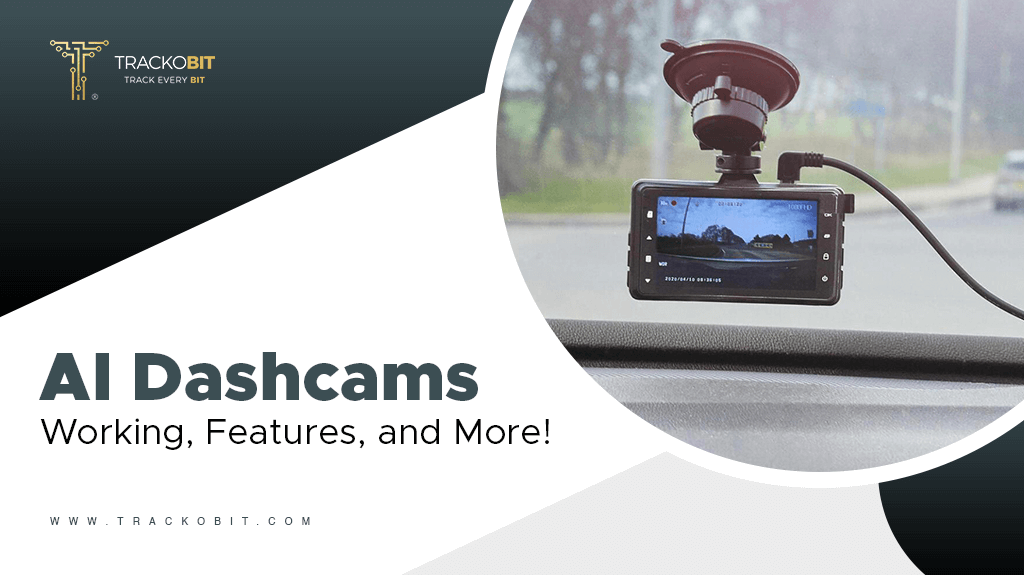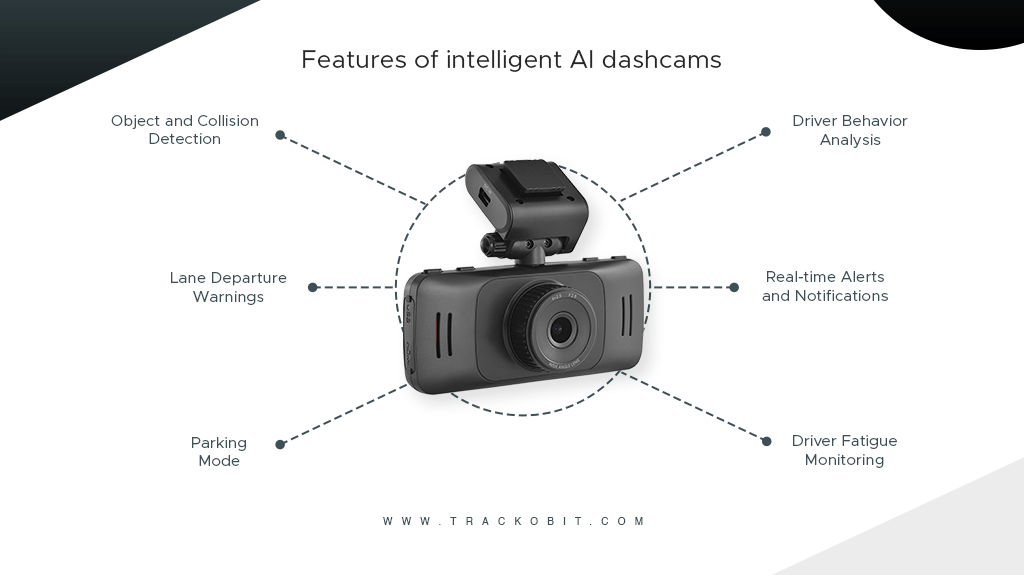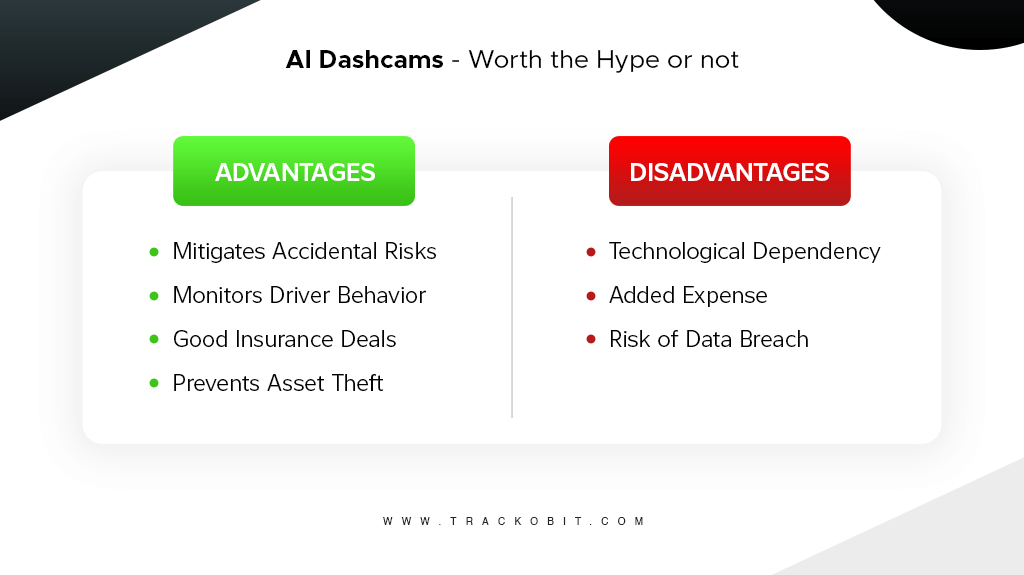-
TrackoBit
Manage commercial vehicles with the new-age Fleet Management Software
TrackoBit -
TrackoField
Streamline your scattered workforce with Field Force Management Software
TrackoField -
Features Resources
-
Blog
Carefully curated articles to update you on industrial trends. -
White Paper
Insightful papers and analysis on essential subject matters. -
Glossary
Explore an alphabetical list of relevant industry terms. -
What’s New
Get TrackoBit & TrackoField monthly updates here. -
Case Study
Explore the cases we solved with our diverse solutions. -
Comparisons
Compare platforms, features, and pricing to find your best fit.
-
About Us
Get to know TrackoBit: our team, ethos, values, and vision. -
Careers
Join the most dynamic cult of coders, creatives and changemakers. -
Tech Support
Learn about our technical support team and services in detail. -
Events
Check out the exhibitions where we left our marks and conquered. -
Contact Us
Connect with us and let us know how we can be of service.
AI Dashcams- Working, Features, and More!
- Author:Anvesha Pandey
- Read Time:9 min
- Published:
- Last Update: February 6, 2024
Table of Contents
Toggle
Googling about AI dashcams? Wait, Here is a detailed guide on everything revolving around AI dashcams, from their definition to the need to incorporate one, Everything!
Table of Contents
Toggle
Forget passive glances in the rearview mirror. AI Dashcams constantly scan the road, warning you in real time about lane departures, potential collisions, and even distracted driving. It’s like having a sixth sense of danger, keeping you and your fleet safe.
Well, enough of giving a cool opening, let’s just get into the details of AI dashcams, their features, and, every other important aspect revolving around dashcam video solutions.
AI Dashcams- Meaning
AI dashcams, or artificial intelligence dashcams, are a type of dashboard camera system equipped with advanced technologies such as artificial intelligence (AI). These devices go beyond traditional dashcams, which primarily record footage of the road ahead and the vehicle’s surroundings.
AI dashcams leverage machine learning algorithms and computer vision to provide additional features like detecting objects and alerting drivers about potential dangers like lane departure, forward collision, pedestrian crossing, etc. Some AI dashcams can even provide voice alerts or haptic feedback to warn the drivers directly.
Well, now that you know the meaning of AI dashcams let’s just have a look at the features of AI dashcams.
Read: Advantages and disadvantages of Dashcams – Are they Worth it?
Features of Intelligent AI Dashcams
- Object and collision detection
AI dashcams use computer versions and machine learning algorithms to analyze the video feed in real-time. They can identify and track objects such as vehicles, pedestrians, or obstacles, in the camera’s field of view.
When a potential collision or obstacle is detected, the AI dashcams can trigger audible warnings inside the vehicle or notifications sent to the driver’s smartphone.
- Lane departure warnings
This feature monitors the vehicle’s position within the lane. If the system detects any unintentional lane changes or drifting without turn signals, it can trigger lane departure warnings.
Additionally, lane departure warnings can be presented as visual alerts on the dashboard or through audible warnings to prompt the driver to correct their course or lane.
- Driver behavior analysis
AI dashcam video solutions also help continuously monitor the driver’s behavior in real time. The systems can identify signs or say events of distraction, such as using smartphones, smoking, or other activities that may divert the driver’s attention from the road.
The fleet dash can also recognize driving behavior, such as rapid acceleration, harsh braking, or sharp turns.
- Real-time alerts and notifications
Fleet dash camera systems help in shooting immediate feedback. If unsafe driving behaviors are detected, the AI dash cams can provide real-time alerts to the driver. These alerts may be visual, audible, or through smartphone notifications.
Additionally, users may have the option to customize the sensitivity of the system and set thresholds for when alerts are triggered.
- Driver Fatigue Monitoring
AI dashcams help in employing facial recognition technology to monitor the driver’s face for signs of fatigue or drowsiness. If in case fatigue is detected, the AI dashcam can issue alerts to prompt the driver to take breaks. To add more the systems may track eye movement and blinking patterns to assess the driver’s level of alertness.
- Parking Mode
The focus on the AI dash cams allows for continuous monitoring while the vehicle is parked. Enables recording if suspicious activity or collision occurs through motion or impact sensors. This feature enhances safety, capturing incidents such as hit-and-run or vandalism. Some devices can even send alerts to owners’ smartphones, ensuring the car is secured even if it’s inadvertent.

How Do AI Dash Cams Work?
The AI dashcams work by analyzing real-time footage captured of your drivers and other road users and will promptly identify any hazardous driving actions, such as excessive speed, abrupt braking, eating, or smoking. This information will be immediately communicated to both the driver and fleet managers, effectively averting any potential accidents and enhancing overall driver safety.
Well, knowing the definition of AI dashcams and it’s working isn’t enough? AI dashcams in itself have a big world, so now just cover more about the unique world of AI dashcams.
Applications of AI Dashcams
Well in this segment we are going to cover the various industries that have incorporated AI dashcams
1) Delivery and logistics
AI dashcams play a crucial role in the delivery and logistics sector by providing real-time monitoring of vehicles. They enhance route optimization, ensure the safety of goods, and contribute to efficient fleet management. Additionally, AI dashcams can record incidents during deliveries, aiding in dispute resolution and providing evidence in case of theft or accidents.
2) Automotive industry ( Driver assistance systems and fleet management)
When it comes to the automotive industry, AI dashcams are integral components of driver assistance systems. They enhance safety with features like collision detection, lane departure warnings, and driver behavior analysis. Smart dash cams for fleets contribute to route optimization, monitor driver performance, and provide valuable data for maintenance scheduling, improving overall operational efficiency.
3) Construction
AI dashcams are utilized in the construction industry for site safety and security. They monitor construction vehicle movements, identify potential hazards, and assist in managing on-site traffic. Dashcams with object detection and collision warnings contribute to preventing accidents, while parking mode enhances the security of construction equipment during non-operational hours.
4) Mining and Natural Resources
In mining operations, AI dashcams help monitor heavy machinery moments, detect potential collisions, and contribute to overall safety compliance. Real-time alerts and incident recording are vital for ensuring the well-being of personnel and preventing accidents in mining and natural resource extraction environments.
Dashcams with Video Telematics
Dashcams are integrated with video telematics to enhance safety and productivity, especially in vehicles and vehicle control. Dashcams equipped with GPS and accelerometers improve performance through features such as loop recording. Video telematics combines this information with recorded imagery, providing a better view of the vehicle’s performance.
These real-time systems interpret driver behavior, road conditions, and potential hazards. Features such as driver training, fleet monitoring, and automatic incident alerts, like heavy-duty braking, simplify operations.
Together, dashcams and video telematics enhance safety, accountability, and operational efficiency. This further helps in becoming a key tool in accident prevention, accident mitigation, and vehicle optimization in general.
| 🔍DMS and ADAS- The Heart and Soul of Video Telematics-
Video Telematics are divided into two solutions- DMS & ADAS which stands for Driver Monitoring System and Advanced Driver Assistance System respectively. Where DMS helps in tracking driver behavior, and ADAS helps monitor the surrounding movements on the road. Well also to quote the software cannot understand actions, it understands only events. Drivers’ actions are classified into events, including activities like smoking, yawning, and distractions. A dashcam records the driver’s movements, associates them with specific events, and generates corresponding alerts. Advanced Driver Assistance Systems (ADAS) takes it a step further by capturing external environmental movements. It triggers alerts when detecting events in the surroundings. This technology proves beneficial for insurance claim settlements, driver training, and overall safety. |
AI Dashcams – Worth the Hype or not?
AI dashcams have recently gained attention and popularity. This is all because of their advanced features and capabilities. The buzz around this technological advancement can be a topic of debate and individual preferences but in general terms knowing the advantages and disadvantages of the technology. This can help you know whether it’s worth the hype or not.
With the advantages and disadvantages, we’ll also be looking into some stats.
Advantages
- Mitigates Accidental Risks
Incorporation technologies like ADAS help provide alerts on lane departure, unwanted collisions, and more to assist drivers and prevent accidents. This further helps promote safe habits through driver training programs to increase awareness and responsible behavior on the road.
To support the above statement let’s have a look into some stats
📌According to the recent estimates of NHTSA (National Highway Traffic Safety Administration), 94% of traffic collisions are caused by human error.
The above stats state that it’s a huge number and it is also a concerning issue. Incorporating one can help you mitigate the causes of accidents.
- Monitors Driver Behavior
AI dashcams have been made for collecting and analyzing data on the behavior of the driver. easier. This includes speed acceleration, braking, and cornering. This information can be used to assess risk and provide feedback to drivers.
Additionally, cameras and sensors to monitor driver attentiveness, detect signs of fatigue or distraction, and provide alerts or interventions when necessary.
- Good Insurance Deals
The incorporation of technologies like ADAS and AI dashcams that focus on accident prevention can have a significant impact on insurance premiums. Insurance companies are increasingly recognizing the value of these technologies in minimizing the risk of accidents and associated claims. Drivers who adopt such safety measures are often eligible for lower insurance premiums as they demonstrate a commitment to safer driving practices.
The data collected through AI dashcams can also be utilized by insurers to assess individual driver risk more accurately, leading to personalized and potentially reduced premium rates for responsible drivers.
- Prevents Asset Theft
While primarily focused on preventing accidents, technologies like ADAS and AI dashcams can also help prevent theft. An AI dashcam in particular can act as an effective theft deterrent by providing constant monitoring and recording. If stolen, these dashcams can capture valuable evidence that helps law enforcement find a stolen vehicle.
In addition, GPS tracking and remote tracking features built into some ADAS systems further increase the chances of recovering stolen vehicles This multi-faceted approach is not only accident prevention but extends to also extensive vehicle safety features.
Disadvantages
- Technological Dependency
One of the main drawbacks of incorporating advanced technologies such as ADAS (Advanced Driver Assistance Systems) is the heavy reliance on technology. As vehicles increasingly rely on complex systems for navigation, collision avoidance, and other safety features, the risk of system failure increases if these technologies fail well or experience technical problems that could compromise the safety of the occupants.
Additionally, drivers can become overly reliant on these systems, potentially reducing their driving skills and situational awareness when the technology is not functioning properly.
- Incur Additional Expense
Implementing sophisticated security technologies comes with a significant financial burden. Manufacturers and users face increased costs associated with integrating ADAS with other advanced security features. The initial price of a vehicle equipped with this technology is high, making it largely inaccessible to a segment of the population.
In addition, repairing or replacing accidentally damaged sensors and components can be costly. These costs can hinder the widespread adoption of advanced safety technologies and contribute to the economic gap in access to safe vehicles.
- Risk of Data Breach
Collecting and analyzing detailed information, especially from AI dashcams and other surveillance systems, raises concerns about privacy and data security and sensitive information collected.
Learn More- Advantages and Disadvantages of Dashcam

📌Why AI-based dashcams are needed more than ever?Now that you know the features, the hype for this advancement, and more of AI dashcams, let’s now understand why is it important to implement this technology in your vehicles.
|
Final Takeaway!
Well now it is time to wrap up this piece of writing, but for sure AI cams have surely been one of the most helpful and useful technological advancements of all times. Installing dashcams in your fleet can provide significant advantages for businesses that rely on their fleet.
By incorporating dashcams, not only can they enhance driving safety, but they can also effectively reduce the occurrence of accidents, financial losses, and the necessity for frequent vehicle maintenance.
TrackoBit offers AI-enabled video telematics software that is compatible with an array of dashcams, Reduce risk and distracted driving with these AI dashcams.
Wanna know more?
FAQs
-
Do AI dashcams need an internet connection?
It doesn’t really matter. Some AI dashcams work locally without requiring an internet connection, while others can use cloud connectivity for additional features such as remote monitoring, over-the-air updates, and cloud storage.
-
Can an AI dashcam be used for insurance purposes?
Yes, many insurance companies accept footage from AI dashcams as evidence if an accident has occurred. Documentation can help determine liability and provide an unbiased account of events.
-
Can the AI dashcam be used in a parking lot?
Yes, there are many AI dashcams in the parking lot that can also monitor when the car is parked. If a move or collision is detected, the recording can be activated, making the parked vehicle safer.
-
Is it easy to install AI dashcams?
Yes, most AI dashcams are designed to be easy to use and can be easily mounted to a vehicle’s windshield or dashboard. They usually come with a mounting bracket and detailed instructions.
-
Does the AI dashcam record constantly?
Yes, most AI dashcams have loop recording functionality, where images are recorded in continuous chunks. When storage is full, the latest volume is overridden by the oldest volume, ensuring that the camera always has the latest recordings.
Anvesha is a communication specialist at TrackoBit. With a strong background in media and communications, she adds much-needed balance and brevity to TrackoBit’s... Read More
Related Blogs
-

When Tracking Needs a Clock: Rethinking Fleet Visibility
Tithi Agarwal December 24, 2025Read on to understand why fleet tracking works better when it follows working hours. Because visibility should support operations, not…
-

What Makes TrackoBit’s Video Telematics Software Truly Next-Gen?
Shemanti Ghosh December 17, 2025TrackoBit’s video telematics software blends smart video intelligence with full server control. The result? Superior fleet reliability and safety.
-

Plug, Pair, Perform TrackoBit Introduces BLE Sensor Integration
Tithi Agarwal November 26, 2025TrackoBit’s BLE Sensor Integration enables wireless, real-time monitoring with faster installs and accurate insights. It improves fleet efficiency, visibility, and…
-

How to Use Driver Behavior Reports as a Sales Hook to Close Big Fleets
Tithi Agarwal October 16, 2025TrackoBit’s driver behavior reports empower fleet providers to win big contracts by showcasing safety, efficiency, and measurable ROI.

Subscribe for weekly tips to optimize your fleet’s potential!
Your inbox awaits a welcome email. Stay tuned for the latest blog updates & expert insights.
"While you're here, dive into some more reads or grab quick bites from our social platforms!"Stay Updated on tech, telematics and mobility. Don't miss out on the latest in the industry.
We use cookies to enhance and personalize your browsing experience. By continuing to use our website, you agree to our Privacy Policy.


































